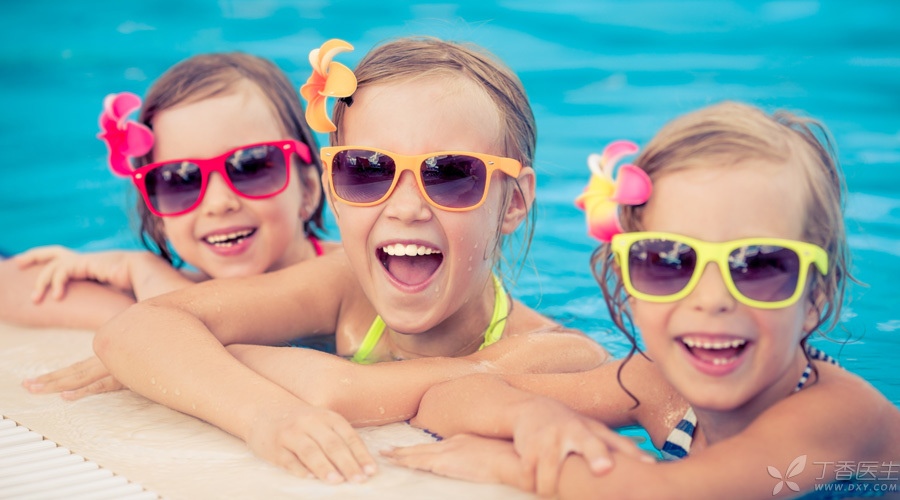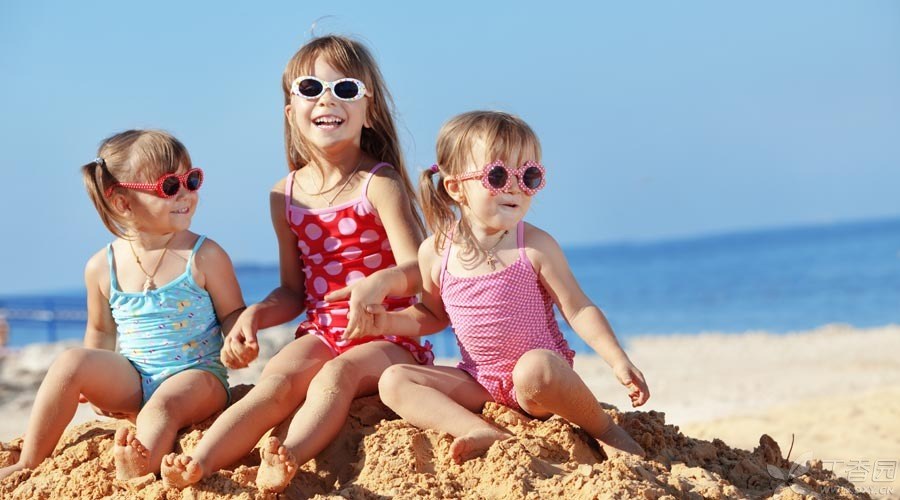
Recently, the weather is getting hotter and hotter, and the sunshine is a bit too bright. How to do a good job of sun protection for the baby has become the most important problem for treasure parents.
Why do you want sun protection?
Proper sun exposure can promote the body to synthesize necessary vitamin D and is beneficial to calcium absorption.
However, there are still ultraviolet rays in the sunlight. Excessive ultraviolet rays can cause some skin problems, such as sunburn, skin photoaging and skin cancer.
Children like to play outdoors and spend more time in the sun than adults. As children’s skin is thinner and more sensitive than adults’ skin, they are prone to sunburn, and children’s self-protection awareness is poor, so parents should do a good job of sun protection for their children.
Ultraviolet B (UVB), which accounts for only 5% of the ultraviolet rays reaching the earth’s surface, contains the most biologically active wavelength. It is the main cause of sunburn, skin inflammatory reaction and excessive pigmentation in summer. Fortunately, it can be blocked by glass, sunshade, clothes, etc.
In the ultraviolet radiation reaching the earth’s surface, About 95% is ultraviolet wave (UVA), It plays a major role in the premature aging and pigmentation of the skin, And may be involved in the formation of skin cancer. Some studies have shown that Long-term and repeated unprotected sun exposure will increase the probability of skin cancer in the future. Four-fifths of skin cancer can actually be avoided through daily sunlight protection measures. Especially childhood sunburn may significantly increase their risk of skin cancer in the future.
When going out, how to protect the baby?
Here are 6 simple and practical suggestions for your reference:
-
Try not to go out when the ultraviolet rays are strongest and avoid 10: 00 a.m. to 4: 00 p.m.
-
Apply sunscreen;
-
Wear thin pure cotton long-sleeved clothes and trousers (or sunscreen clothes, the Chinese standard is: UV protection coefficient UPF > 30 can be marked as UV protection products, pay attention to check the tag when purchasing);
-
Wear a sunscreen hat with a wide brim. Wearing sunglasses can protect at least 99% of ultraviolet rays. (Click here to learn how to choose children’s sunglasses)
-
Use a sunshade;
-
Encourage children to play in the shade. (Babies under 12 months old should always stay in the shade)
At the same time, parents should set an example for their children and demonstrate sun protection.
Can babies use sunscreen? How old is it?
The American Academy of Pediatrics believes that infants under 6 months old should avoid direct sunlight and recommends avoiding sunscreen products (sunscreen) for infants under 6 months old.
However, if it is really necessary to take the baby out to avoid the sun and there are not enough clothes and shades available, a very small dose of sunscreen with a SPF of at least 15 can be applied in a small area (such as the baby’s face and back of hand).
Just stay in the shade, do you still need to be fully armed to protect yourself from the sun?
Only about 50% of ultraviolet rays can be avoided under umbrellas or shade trees, so active sun protection measures should be taken, such as wearing long-sleeved trousers, wide-brimmed hats, sunscreen and sunglasses.
The baby’s skin barrier is immature, Therefore, the selected sunscreen products should be non-irritating to skin and eyes and have low possibility of sensitization. Physical sunscreens are preferred (as opposed to chemical sunscreens, The main components are titanium dioxide and zinc oxide, which block ultraviolet rays by reflection or scattering to protect against sun), because they can provide broad-spectrum protection, and their irritation is small, rarely cause allergy, and both can be used as food additives, since they can be eaten, not to mention applied to skin externally, they are very safe.
Select a broad-spectrum children’s formula sunscreen with a SPF of at least 15 and covering UVA and UVB (see product instructions for details), and apply sunscreen half an hour before going out.
In addition, it is not recommended to use sunscreen spray for children because there is a risk of inhalation.
Remember, identify the main sunscreen ingredients-titanium dioxide and zinc oxide.
Does what pay attention to applying sunscreen?
According to the international standard for human body testing of sunscreen agents, the recommended dosage is 2 mg/cm ², which is about the same as the thickness of 1 ~ 2 sheets of A4 paper. Bao parents can refer to this dosage when applying sunscreen to their babies.
Be sure to use enough sunscreen to cover all exposed areas, especially face, nose, ears, feet and hands, and even knees, and apply it evenly.
In addition, it should be reminded that most of the sunscreen (including sunscreen marked waterproof) will be lost in about 2 hours due to sweating, swimming, soaking in water or friction, so if you spend a long time outdoors or swimming, you should apply it again every 2 hours.
About SPF and PA, and the choice of sunscreen products
As you may have heard, SPF is the level of UVB radiation protection for sunscreen products.
For the level of protection, different countries have different regulations. For example, the U.S. Sun protection mark broad-spectrum (i.e. Broad-spectrum sun protection, including UVB and UVA), some European countries use PPD or PA to indicate UVA protection index, and some use a circle outside UVA to indicate. Asia mainly uses PA value, the more plus signs, the stronger the protection capability.
Should how’s sunscreen products be selected? Here are a few references:
- For children’s daily sun protection, it is enough to choose SPF 15 and PA + + sun protection products. If you go out shopping, outdoor sports and outdoor play, you can choose SPF 30, PA + + + sunscreen products. When swimming, it is best to choose SPF 50, PA + + + + and sunscreen products with waterproof function.

Question and Answer Time
1. Can you protect yourself from the sun through glass?
Answer: No. UVA will be refracted into the room through the glass window.
2. Can you protect yourself from the sun under an umbrella or under the shade of a tree?
A: It has certain sunscreen effect, but it is not enough, because only about 50% of ultraviolet rays can be avoided under umbrellas or shade trees.
Can sun exposure relieve jaundice?
A: It is helpful, but not recommended.
Among the light that bilirubin can absorb, the light with a wavelength of 450 ~ 460nm has the strongest effect, while the blue light has a wavelength of 425 ~ 475nm, so it best meets the requirements.
Sunlight contains various wavelengths of light, including blue light, so sun exposure is helpful to reduce jaundice. However, the amount of blue light in sunlight is very small, which is a drop in the bucket for children who need to actively reduce jaundice, so sun exposure is not recommended to reduce jaundice.
4. Is the higher the SPF, the better?
A: No, we can choose SPF 15 and PA + + products in our daily life.
Products with high sun protection index generally have more complex sun protection ingredients and relatively high probability of skin irritation and allergic reactions. If you want to have long-term outdoor activities, it is recommended to choose sun protection products with higher sun protection index.
5. Do you not need sun protection in winter or cloudy days?
A: No, it is also necessary to protect from the sun.
On cloudy days or in winter, people may also get sunburned, because up to 80% of the sun’s ultraviolet rays can pass through the clouds.
In addition, ultraviolet rays can be reflected by water, sand, snow, building glass and the like. Therefore, winter also needs to do a good job of sun protection measures. The safer method is to inquire about the current ultraviolet index. When the ultraviolet index predicts a radiation level of 3 (moderate) or higher, safety protection measures should be taken. Many weather app can inquire about the immediate ultraviolet index for reference.
